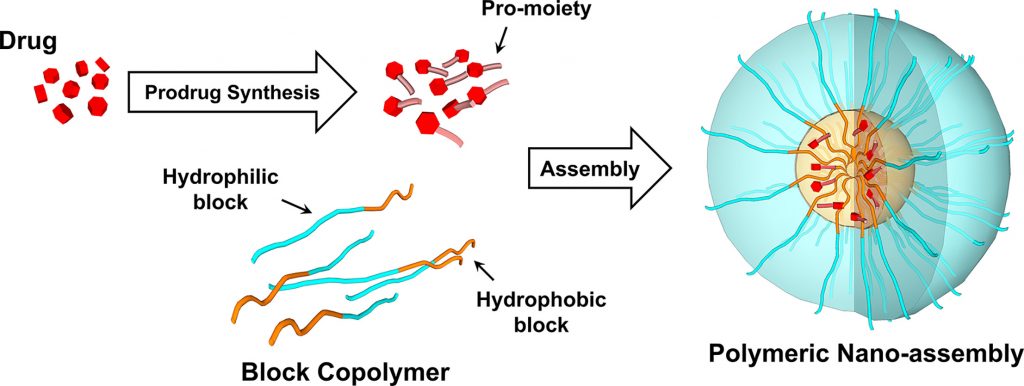Poly(ethylene glycol)-block-poly(D,L-lactic acid) (PEG-b-PLA) and poly(ethylene glycol)-block-poly(ε-caprolactone) (PEG-b-PCL) form nano-assemblies, including micelles and nanoparticles, that increase the water solubility of anticancer drugs for injection. PEG-b-PLA and PEG-b-PCL are less toxic than commonly used organic solvents or solubilizers for injection, such as Cremophor EL® in Taxol®. Formulating paclitaxel in PEG-b-PLA micelles, as Genexol-PM®, permits dose escalation over Taxol®, enhancing antitumor efficacy in breast, lung and ovarian cancers. To expand the repertoire of anticancer drugs for injection, acyl and oligo(lactic acid) ester prodrugs have been synthesized for PEG-b-PLA and PEG-b-PCL nano-assemblies, compatibility, and novel nanomedicines for injection. Notably, acyl and oligo(lactic acid) taxane prodrugs delivered by PEG-b-PLA and PEG-b-PCL nano-assemblies display heightened plasma exposure, reduction in biodistribution into major organs and enhanced tumor exposure in murine tumor models, versus parent anticancer drugs in conventional formulations. As a result, acyl and oligo(lactic acid) ester prodrugs are less toxic and induce durable antitumor responses. In summary, acyl and oligo(lactic acid) ester prodrugs widen the range of anticancer drugs that can be tested safely and effectively by using PEG-b-PLA and PEG-b-PCL nano-assemblies, and they display superior anticancer efficacy over parent anticancer drugs, which are often approved products. Oligo(lactic acid) ester taxane prodrugs are in pre-clinical development as novel drug combinations and immunotherapy combinations for cancer therapy.

This article is cited by 7 publications